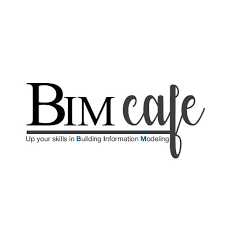Introduction
React JS is a popular open-source JavaScript library used for building dynamic and interactive user interfaces, particularly for single-page applications. Developed by Facebook, it simplifies the development process with a component-based architecture, allowing developers to build reusable UI components. One of React’s key features is its virtual DOM, which optimizes performance by updating only the necessary parts of the UI. React’s declarative approach makes code easier to read and maintain. Its strong ecosystem, vast community support, and compatibility with other libraries and frameworks make it a go-to choice for front-end development across web and mobile platforms. One can check the React JS Coding Interview Questions to learn more about React JS coding.
All About React JS
React JS is a popular JavaScript library developed by Facebook for building user interfaces, primarily for single-page applications. It allows developers to create reusable UI components that can efficiently manage the view layer of web applications. React uses a virtual DOM, which enhances performance by updating only the parts of the real DOM that have changed, instead of reloading the entire page.
The core concepts of React include components, which are reusable pieces of code, state for managing data, and props for passing data between components. React also uses JSX (JavaScript XML), a syntax extension that allows writing HTML-like code within JavaScript.
React is widely used for building dynamic web applications due to its flexibility, performance, and a strong developer community, making it a go-to choice for front-end development. It integrates well with other libraries and frameworks like Redux for state management.
Basic React JS Coding Interview Topics
Here are some essential topics for a basic React JS coding interview:
1. Components
React is component-based, so understanding how to create and use components is essential. There are two types: Functional Components and Class Components. Interviewers might ask how they differ, especially with the advent of Hooks, which allow functional components to manage state and lifecycle.
2. JSX
JSX (JavaScript XML) allows you to write HTML inside JavaScript. Questions could focus on JSX syntax and how it compiles into regular JavaScript.
Example:
“const element = <h1>Hello, World!</h1>;”
3. State and Props
- State: Used to manage data that changes over time within a component.
- Props: Short for “properties”, props allow components to receive data from their parent component. The React Course for Beginners offers the best guidance in these React concepts.
Example question: Explain the difference between state and props, and when to use each.
4. Handling Events
React simplifies event handling. Interviewers might ask how to handle events like button clicks, form submissions, or keyboard actions.
Example:
“function handleClick() {
alert(‘Button clicked!’);
}
<button onClick={handleClick}>Click Me</button>”
5. Lifecycle Methods
In class components, lifecycle methods such as componentDidMount, componentDidUpdate, and componentWillUnmount control component behavior at different stages. With functional components, interviewers may ask how Hooks (e.g., useEffect) replace these methods.
6. Hooks
Hooks like useState and useEffect allow functional components to manage state and side effects. Understanding how to use them is crucial for React interviews. Consider checking the React JS Coding Interview Questions to learn more.
7. Conditional Rendering
Questions may focus on how to render components conditionally using JavaScript operators like if statements or ternary operators.
8. Lists and Keys
Handling dynamic lists and ensuring each element has a unique key for efficient updates is a common topic.
These concepts form the foundation of most React JS coding interviews.
Why Is React JS So Important?
React JS is important because it revolutionized front-end development with its efficient and flexible approach to building user interfaces. Developed by Facebook, it simplifies the process of creating interactive and dynamic web applications.
Here are the key reasons for its significance:
- Component-Based Architecture: React’s reusable components make code more modular and maintainable, allowing developers to build complex UIs by composing small, independent components.
- Virtual DOM: React uses a virtual DOM, which optimizes updates and improves performance. Instead of re-rendering the entire page, React updates only the specific parts of the UI that change, leading to faster and more efficient web applications.
- Declarative Programming: React allows developers to describe what the UI should look like, and React handles the updates. This makes code more predictable and easier to debug.
- Strong Ecosystem and Community: React has a vast ecosystem of tools, libraries, and a strong community. It integrates well with popular state management libraries like Redux and with back-end frameworks.
- Cross-Platform Development: With React Native, developers can build mobile apps for iOS and Android using the same React principles, broadening its use across platforms.
These factors make React essential in modern web development. Therefore, aspiring professionals must join the React Course for Beginners for the best skill development.
Conclusion
React JS is a powerful and widely-used JavaScript library that enhances web development through its component-based architecture, virtual DOM for performance optimization, and declarative programming style. Its ease of use, strong ecosystem, and cross-platform capabilities with React Native make it a top choice for building dynamic and responsive web applications. Overall, React’s flexibility and efficiency have made it a cornerstone in modern front-end development.



